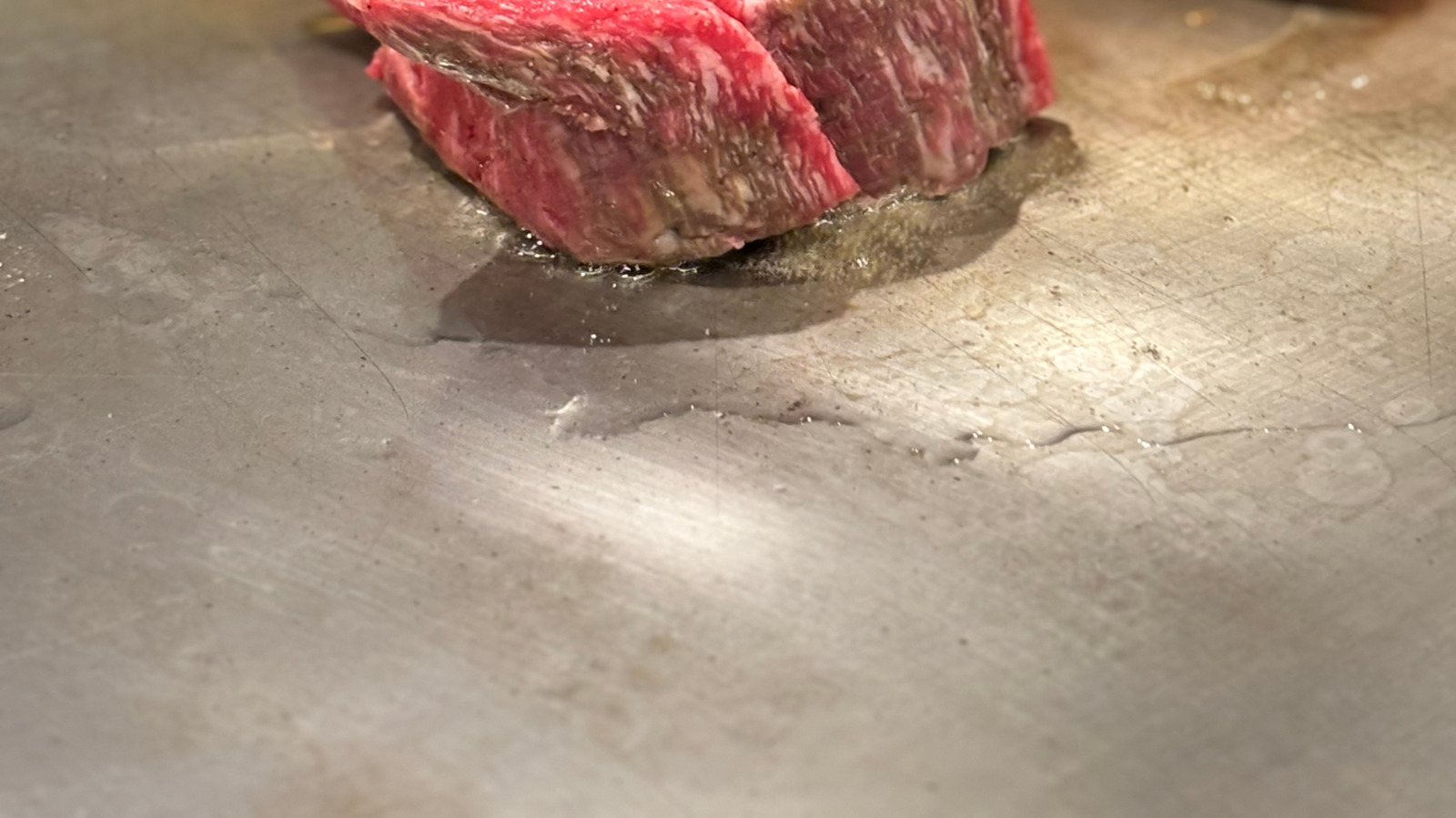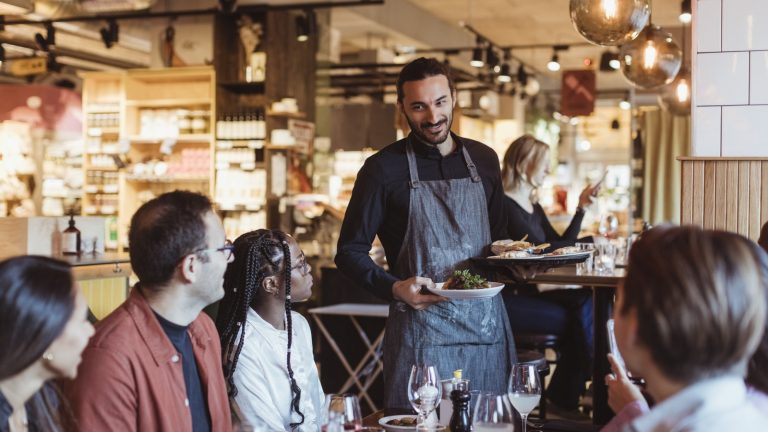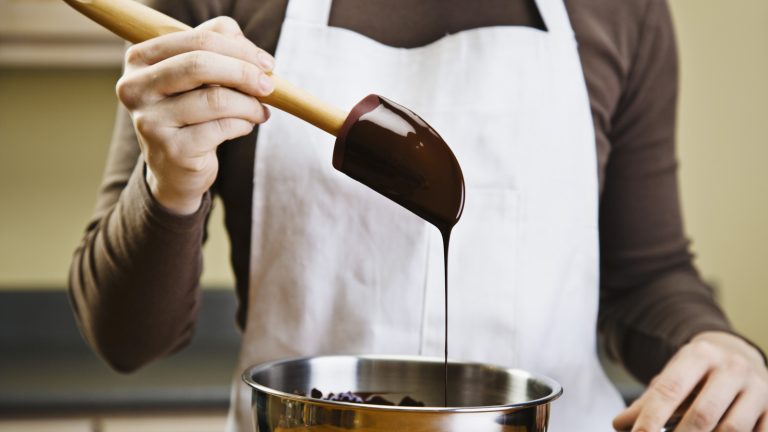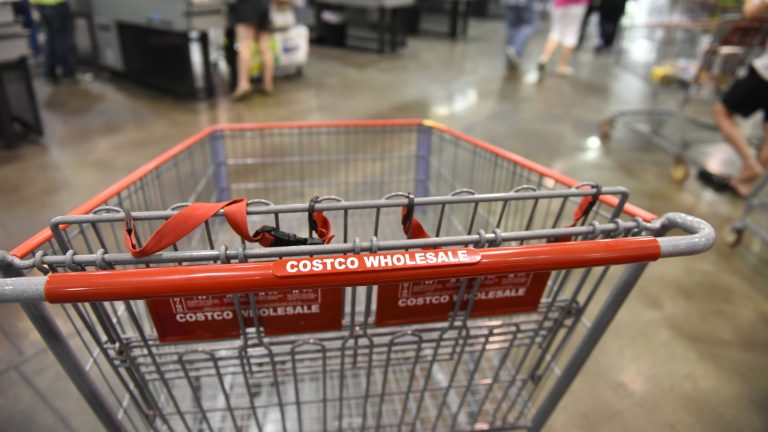There are several dependable ways to cook a delicious steak, yet there’s a particular tactile pleasure to using a Blackstone griddle. Designed as a versatile outdoor cooktop, the device is essentially a flat top grill with a steel cooking surface. With the ability to get searing hot, this creates the ideal conditions for cooking steak; the method’s especially well-known for creating a delicious crust, and you can also get an uber-juicy consistency with a few considerations. After all, a Blackstone griddle is a terrific device for searing fatty, dense cuts of meat. It comes as no surprise the cooking style offers incredible potential for richly textured meat.
As with other steak preparations, perfection comes through details. If you keep a tab on the employed cut, maintain the optimal temperature, and even add a few extra ingredients, you can get juicy steak from a Blackstone griddle every time.
Buy a thick, well-marbled steak
Selecting the best cut of steak is a critical step that comes before cooking even starts. These shine with other cooking methods as much as on a Blackstone griddle, but it pays off to be extra-selective: The device’s surface optimizes the external sear, making it best to buy a fatty and thick steak. This way, you can achieve that delectable surface char while enjoying a juicy interior by way of the melted fat.
Top-tier candidates include beloved options such as ribeyes (an especially well-marbled option), New York strips, and sirloins. You could also opt for a larger porterhouse steak, or chuck eyes are a delicious budget ribeye alternative. It’s beneficial to buy fresh meat from a reputable producer: When shopping at a butcher, visually inspect for tiny white flecks evincing marbling and don’t forget to glance at the thickness. Cooking on a Blackstone griddle is the ideal opportunity to purchase U.S. Department of Agriculture Prime-graded beef since the meat has the most marbling. Spend extra on a fatty, beefy cut and be rewarded with a mouthwatering result off the griddle.
Maintain a hot griddle
Get the temperature hot to attain a Blackstone griddle’s magical crust-creating qualities, aiming for 500 degrees Fahrenheit. The creation of a crust doesn’t physically seal in juices (a common culinary myth) but the high temperature does quickly evaporate water inside the steak, thereby causing the crackly exterior texture. While your steaks are seasoned and resting, turn on the griddle and wait around 15 minutes before you start checking the surface temperature.
Before cooking, make sure your Blackstone griddle is properly seasoned and ensure your steak is as dry as possible before putting it on the grill – with less water evaporating on the cooking surface, you achieve better conditions for the Maillard reaction, the reason meat changes color as it’s cooked. When everything is ready, add a little oil and let the meat hit the griddle. Keep the conditions hot and consistent by flipping the steak onto a fresh spot on the grill every minute or so — especially if it’s thick. Keep the Blackstone griddle dependably hot and the resulting steak’s consistency shines.
Keep a close eye on the steak’s temperature
It’s easy to get carried away while using a Blackstone griddle with all the eye-catching sizzling happening, but when you’re cooking several steaks, you need to be able to quickly check their internal temperature. As a result, you definitely want a cooking thermometer on hand: It’s the most dependable assessment of readiness (even if you’re used to the simple finger test to gauge doneness) and the extra assurance pays off.
It’s better to insert the thermometer because, for one, the extra-crisp crust complicates getting a feel of the steak. Additionally, a Blackstone griddle has hot and cold zones on the surface so its temperature isn’t uniform. The inconsistencies can be used advantageously with griddle experience, but it’s easy to let a particular steak slip into dry territory. Note that the beef’s temperature continues to rise off of the griddle (especially when it’s a bulky cut), so check for around 10 degrees under your desired goal and pull the beef early. Follow with the essential resting time of around five minutes after cooking completes — you wouldn’t want to lose the steak’s juiciness right at the end.
Baste the steak with fat
A unique attribute of a Blackstone griddle is its large, flat cooking surface. Unlike cooking steaks on a grill — where ingredients can slip through the grates — it’s easy to accentuate the meat with a sauce component. For an especially effective way to amplify juiciness, baste the beef with butter during preparation.
You can melt the fatty ingredient right on the griddle, perhaps in a small vessel. While the beef’s cooking, spoon butter atop to achieve an even better crust and infuse the interior with fat. Plus, the meat cooks faster and more uniformly, helping ensure a moist interior. You can also add in aromatics such as herbs, garlic, and ginger, flavoring the beef in a new fashion. If basting while cooking feels laborious, you can always craft the butter-based sauce after searing. Sauté ingredients such as mushrooms and onions into the mix to develop a more robust steak topping.





